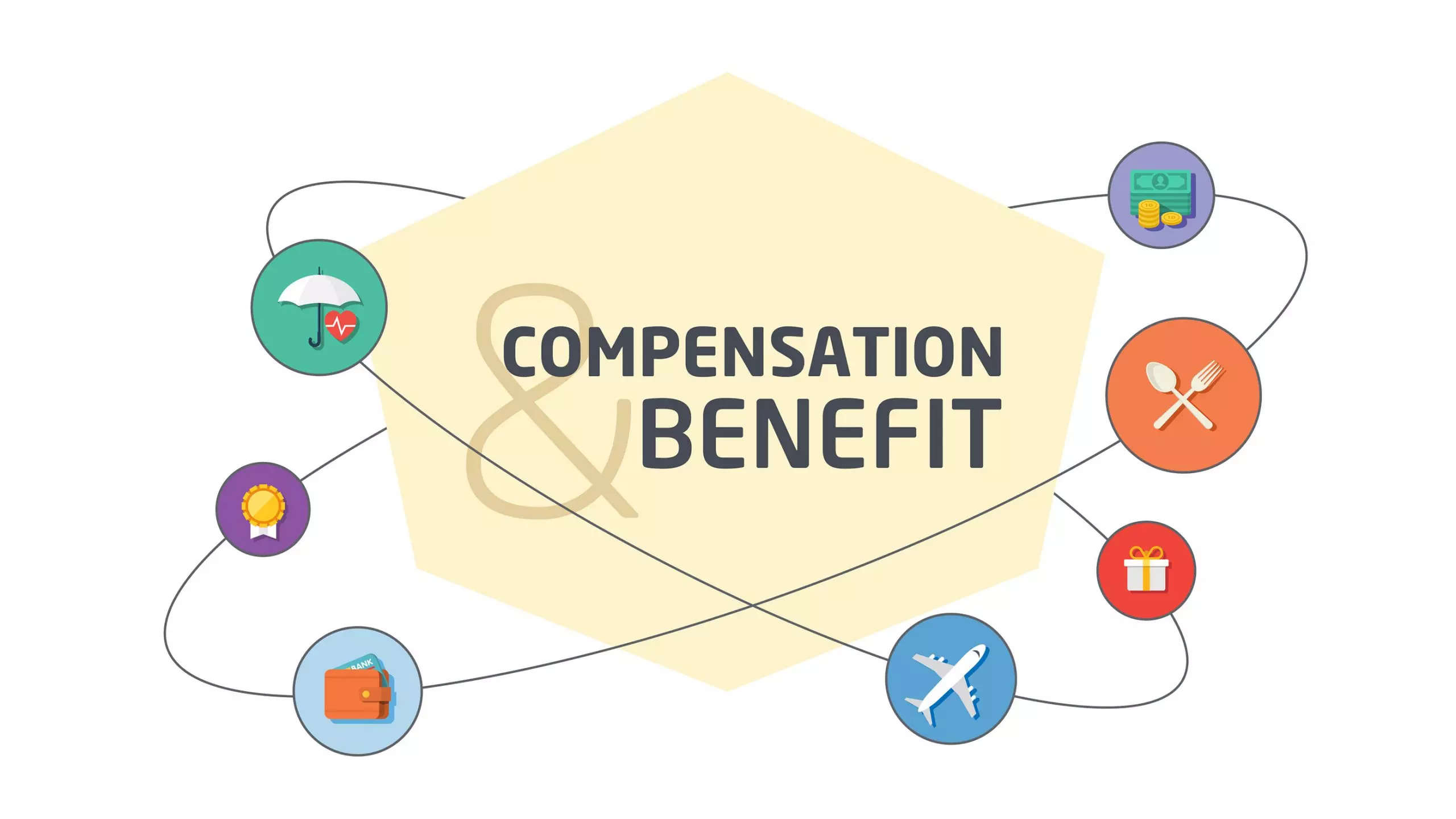
The idea of compensation in today's fast-paced corporate world goes well beyond the straightforward notions of salary and incentives. It includes a wide range of intricate financial incentives, bonuses, and awards intended to inspire, draw in, and keep workers.
The same people whose compensation is supposed to benefit the employees frequently need to comprehend its complexities despite its crucial necessity. This miscommunication can result in discontent, a decline in output, and even attrition.
As a result, salary education for staff members is not only a wise practice but also a crucial element of efficient human resource management. This article delves into the significance and methodologies ofeducating employees about compensation.
It's a guide aimed at employers, HR professionals, and leaders who recognize the value of a well-informed workforce. There needs to be more than just knowing the numbers on a paycheck to understand compensation.
It involves comprehending the structure of salary, the criteria for bonuses, the benefits package, and the opportunities for growth and advancement that compensation may represent.
What Is Compensation?
In the context of employment, compensation is the total amount of money paid to a worker in exchange for their labor or services rendered to an organization. This idea is essential to the employer-employee relationship because it shows how much the company values the worker's abilities, talents, and experience in addition to providing monetary compensation for their job.
Fundamentally, compensation usually consists of monetary transfers such as salaries, wages, commissions, and bonuses. While commissions are frequently linked to sales targets or performance measures, bonuses are extra compensation for exceeding certain thresholds or for exhibiting extraordinary performance.
Salaries and wages are recurring payments, typically based on an hourly, weekly, or monthly rate. In addition to these upfront payment methods, remuneration may also include less obvious but equally essential advantages.
Health insurance, retirement programs, paid time off, parental leave, and other benefits like employee discounts or tuition reimbursement are some examples of these advantages. These components of pay are essential for giving workers financial stability and raising their standard of living in general.
Furthermore, remuneration is essential for drawing in and keeping talent. Organizations need to offer competitive salary packages in order to attract and retain talented people. It is also a tool for stimulating professional development inside the company and recognizing achievement.
Transparency and fairness in remuneration have received more attention in recent times. This entails being transparent about the process used to develop pay scales and making sure that compensation policies are fair and devoid of discrimination. These procedures not only follow the law but also create a happy workplace, which increases worker loyalty and happiness.
Why Are Benefits And Compensation Significant?
Attracting And Retaining Talent
There is a correlation between a well-designed remuneration plan and an employer's ability to recruit and retain top personnel.
If employees are satisfied with the perks they receive, they are more likely to remain with the firm and to talk about it with their friends and family, which may help the company recruit fresh talent. The cost of retaining an employee is also lower than the cost of hiring a new employee.
The Enhancement Of Productivity
A productive worker is content with their position. Workers who are content with the amount of money they are paid are more likely to be productive while they are on the job. As a result, this may result in improved revenues for the firm as well as a better balance between work and personal life for the personnel.
Getting Workers Involved
Employees might be more engaged in their work and feel more like they are a part of the firm when they receive benefits.
As an illustration, one of the most effective methods for fostering employee engagement is to provide incentive-based compensation plans that reward workers for accomplishing certain objectives. Not only does this increase production, but it also increases the contentment of workers.
Fostering Employee Motivation
When employees believe that their effort is recognized and rewarded by their employer, they are more likely to feel motivated to do their jobs.
Motivating employees by providing them with a financial incentive to accomplish outcomes is one way that compensation may assist in encouraging employees. In addition, it is essential to provide non-monetary incentives, such as paid time off, to employees in order to make them feel valued.
Reduce Employee Turnover
Maintaining a happy workforce is essential since employee turnover is not only expensive but also has the potential to cause disruptions to the organization. As an illustration, workers who are dissatisfied with their pay are more inclined to look for other employment opportunities.
However, if customers are pleased with the amount of the bundle they received, they are more likely to remain with the firm. A benefits plan that is well-designed may assist in decreasing employee turnover, which in turn can save the firm money.
Types Of Compensation
The entire amount of money an employee gets paid for their services to an organization is known as compensation, and it is an essential part of employment. It's a sophisticated blend of components, all of which are intended to support the objectives of the company and meet the diverse demands of the workforce.
Employers who need to create successful pay plans and employees who need to know what to anticipate and bargain for both need to understand the many forms of compensation.
Base Salary And Wages
The most basic type of compensation is this one. Typically, a salary is a set sum of money that is given to an employee on a regular basis, usually once a month or twice a week. In contrast, wages are frequently determined on an hourly basis and are subject to change based on the quantity of hours worked.
Exempt workers (those who are not entitled to overtime) typically receive salaries, whereas non-exempt workers typically receive wages.
Overtime Pay
Overtime compensation is an essential part of the salary package for non-exempt workers. This entails receiving a higher rate (often double time or time and a half) for hours worked in excess of the typical 40-hour workweek in many jurisdictions.
Bonuses
Bonuses are extra money given to workers when they surpass performance targets or do exceptionally well. These can take many different forms, including sign-on incentives for new recruits, year-end bonuses, and performance bonuses.
Commissions
Commissions are payments contingent on an employee's performance and are common in sales jobs. Typically, they represent a portion of the sales the employee generates. The goal of this kind of pay is to encourage exceptional sales success.
Profit Sharing
Employees who participate in a profit-sharing plan get a portion of the company's earnings. This matches employees' interests with the company's financial objectivesin addition to rewarding them for their contributions to the company's success.
Stock Options And Equity
Employees who get stock options or equity-based remuneration have an ownership stake in the firm, which is especially common in startups and tech enterprises. If the company's worth rises over time, this might be pretty profitable.
Benefits
Benefits, including life insurance, disability insurance, retirement plans like 401(k)s, dental and vision coverage, and health insurance, are sometimes seen as indirect compensation. These benefits are essential for giving workers financial stability and health protection.
Paid Time Off (PTO)
This includes holidays, personal days, sick leave, and vacation time. PTO is an essential component of pay because it gives workers a chance to recover and rest, which boosts output and job satisfaction.
Perquisites (Perks)
These are supplementary benefits, often non-cash, that employers provide to their staff. Flexible work schedules, remote work choices, gym memberships, businessvehicles, and complimentary meals are examples of typical benefits.
Non-Cash Compensation
This can take scholarships for further education, company-funded training and development opportunities, or rewards of different kinds. These pay structures work incredibly well for keeping and engaging employees.
Severance Pay
Severance pay, which is paid out when an employee is let go or quits under specific circumstances, is a type of benefit that helps with transitional expenses.
Every kind of compensation has a distinct function. Indirect compensation and non-cash perks are essential for total work satisfaction and employee well-being, even if direct financial transfers like salary and wages are crucial.
Thus, a well-designed compensation plan takes into account not just the amount given but also how it fits in with the organization's strategic goals and the demands and motivations of its staff.
Ways To Educate Employees About Company Benefits And Compensation
Embrace The Digital
In recent years, there has been a discernible trend away from conventional ways of communication and toward the tremendous options that the digital domain offers. This transition has occurred as a result of the assault of technology.
Digital innovation has also made significant progress in the workplace, with wholly automated human resources management solutions rapidly gaining acceptance among businesses. This trend is expected to continue.
A digital platform that functions as a centralized unit for maintaining employee data and is accessible and user-friendly in equal measure is becoming the most effective way of storing and disseminating critical information, such as specifics on the perks offered by the firm.
Employees are able to gain access to this information with the simple click of a few buttons, eliminating the need for them to go through the time-consuming hassle of first contacting human resources, requesting the necessary paperwork, and then ultimately having only enough time to flippantly leaf through it once it is finally in their possession!
Companies all over the world have started playing with the concept of adopting these technologies, which are now readily available in the market, because of the sheer simplicity and comfort that these digital management platforms have offered on their own.
Educate Your Employees On Their Total Rewards
A total reward is the sum of all the tangible and intangible advantages that an employee receives as a result of working for your firm. These benefits include monetary compensation, bonuses, health insurance, retirement plans, opportunities for professional advancement, a healthy balance between work and personal life, and recognition.
On the other hand, considering that the majority of workers are solely concerned with their base salary, they may need to comprehend or appreciate the worth of their overall incentive package.
Suppose you want to boost employee engagement and retention. In that case, you need to educate your employees on the benefits they get and how those rewards complement their personal and professional objectives.
There are a variety of techniques and approaches that may be utilized in order to inform and educate your employees about their total rewards. Some examples of these are total rewards statements, online portals, newsletters, webinars, and seminars.
Design A Fair And Competitive Compensation Strategy
A compensation strategy that is fair and competitive guarantees that your employees are compensated in a manner that is both equitable and competitive, taking into account their talents, performance, and the contribution they make to the success of your firm.
You need to undertake frequent market research, assess your internal pay data, develop pay grades and ranges, and review your pay rules and procedures in order to design a compensation plan that is both fair and competitive.
In addition to this, you need to make sure that your pay strategy is in accordance with the applicable rules and regulations, such as the Equal Pay Act, the Fair Labor Standards Act, and the Affordable Care Act.
Talk About Compensation Outside Of Open Enrollment
As choices are changing from being mainly in the hands of the employer to being in the hands of the employee, it is becoming increasingly important for employees to have a solid understanding of the benefits they get.
It would not be sufficient to discuss benefits during the open enrollment period. It is essential to communicate to employees about benefits in a manner that takes into account the many seasons and life events that occur throughout the year.
Those workers who are preparing to establish a family, for instance, should already have information prepared about trips to the doctor and childcare arrangements. It is essential to provide employees with the educational tools and channels that they prefer so that they may remain informed throughout the year and make better purchase decisions.
Develop A Pay Structure
Through market analysis and other forms of research, the Human Resources department is able to establish a compensation structure that is both fair and competitive.
When designing a pay structure, it is vital to take into account the various degrees of responsibility that exist within an organization. This allows for the establishment of distinct pay rates for various designations and responsibilities.
Depending on the employee's level of experience, performance, and talents, the remuneration packages are different for each individual. Employees are provided with a clear route for professional advancement when a suitable compensation structure is in place, which helps to recruit and retain talent.
Communicate Benefits And Compensation To Employees
Having workers who are aware of the compensation package and who are confident that the business is appropriately paying them is of the utmost importance. The human resources department ensures that employees are kept informed about any modifications to the benefits package, such as shifts in pay rates or extra perks.
When necessary, employees have the opportunity to query the benefits package and receive an explanation from the Human Resources department. Educating staff on the various components of the package may be accomplished via the use of training programs.
Frequently Asked Question
What Role Does HR Play In Educating Employees About Compensation?
HR plays a crucial role by providing clear, accurate information, addressing concerns, and ensuring employees understand their compensation packages.
How Often Should Information About Compensation Be Communicated To Employees?
Regularly, especially when there are changes in compensation policies or during performance review periods.
Should Employees Be Trained To Negotiate Their Compensation?
Yes, training employees in negotiation skills can empower them to effectively discuss their compensation, aligning their expectations with organizational capabilities.
To Wrap It Up
Educating employees about compensation is a vital aspect of human resource management that goes a long way in fostering a transparent, motivated, and satisfied workforce. Through lucid communication of the several aspects of pay, such as wages, benefits, bonuses, and non-cash incentives, companies may guarantee that their staff members are knowledgeable of and grateful for their overall benefits package.
Employee engagement and trust are increased by this knowledge, which also gives them the ability to make wise decisions regarding their professional and personal development. Keeping a happy and productive work environment requires regular and open communication regarding changes to pay practices.



